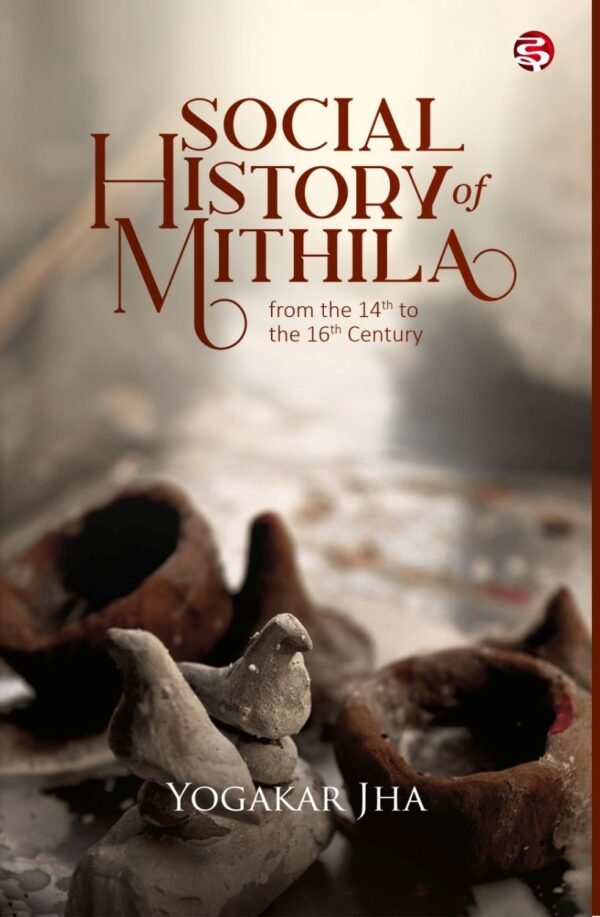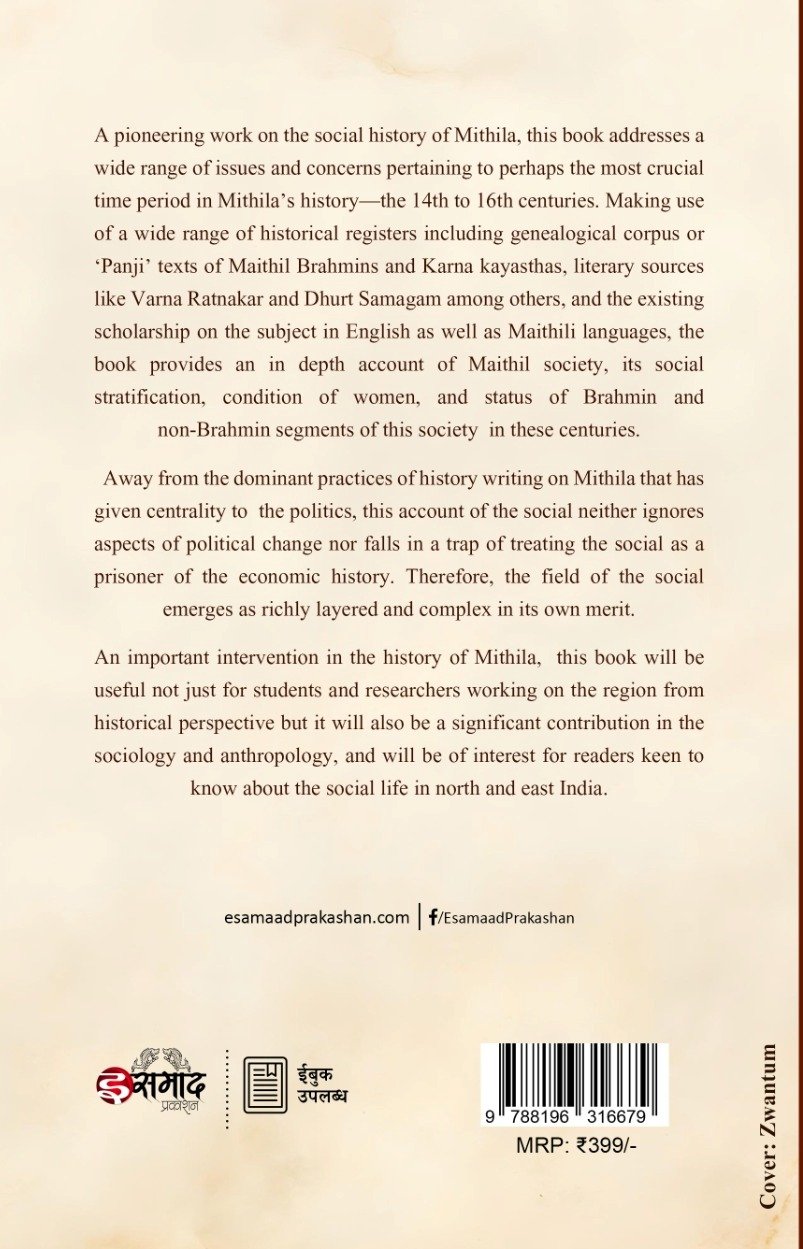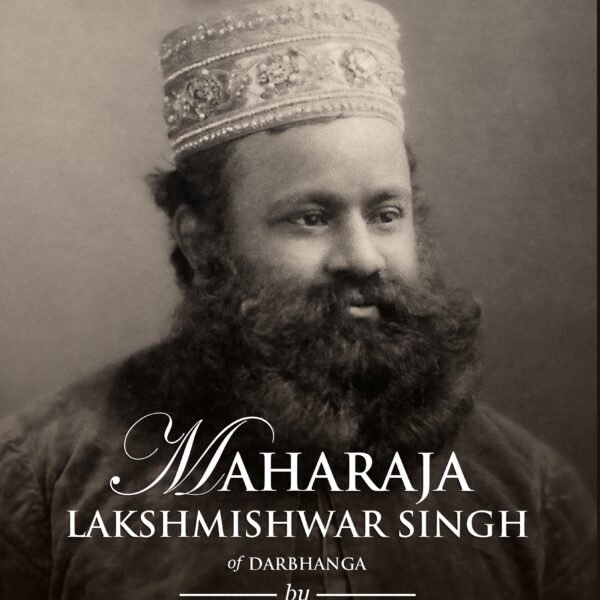A pioneering work on the social history of Mithila, this book addresses a wide range of issues and concerns pertaining to perhaps the most crucial time period in Mithila’s history—the 14th to 16th centuries. Making use of a wide range of historical registers including genealogical corpus or ‘Panji’ texts of Maithil Brahmins and Karna kayasthas, literary sources like Varna Ratnakar and Dhurt Samagam among others, and the existing scholarship on the subject in English as well as Maithili languages, the book provides an in depth account of Maithil society, its social stratification, condition of women, and status of Brahmin and non-Brahmin segments of this society in these centuries.
Away from the dominant practices of history writing on Mithila that has given centrality to the politics, this account of the social neither ignores aspects of political change nor falls in a trap of treating the social as a prisoner of the economic history. Therefore, the field of the social emerges as richly layered and complex in its own merit.
An important intervention in the history of Mithila, this book will be useful not just for students and researchers working on the region from historical perspective but it will also be a significant contribution in the sociology and anthropology, and will be of interest for readers keen to know about the social life in north and east India.
With a fresh perspective, the book’s core strength lies in its use of hitherto untapped source material for reconstructing a relatively neglected period of Mithila’s history, 14th to 16th century. The period is significant for Maithil society as the social divisions crystallized in new forms. The book particularly focuses on two groups—Maithil Brahmins and Karna Kayasthas—to study this crystallization. Towards this end, the author elaborately discusses ‘panji’ texts (the corpus that deal with genealogical records of specific sections of maithil Brahmins and kayasthas). Perhaps, this was the first time, a historian used Panji accounts in such a detailed manner when the book was orginally written as a doctoral thesis in 1969.










Reviews
There are no reviews yet.